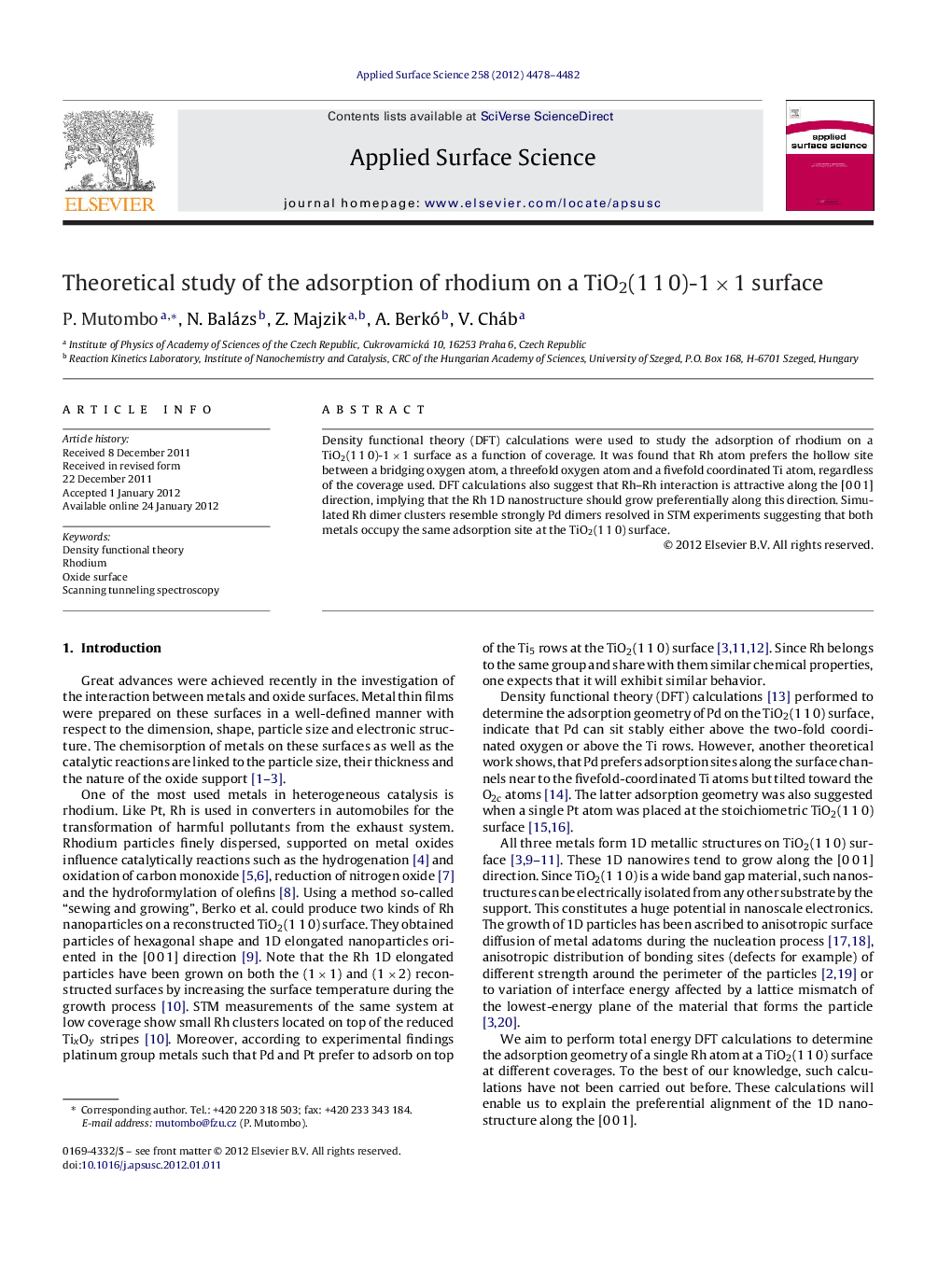| Article ID | Journal | Published Year | Pages | File Type |
|---|---|---|---|---|
| 5362201 | Applied Surface Science | 2012 | 5 Pages |
Density functional theory (DFT) calculations were used to study the adsorption of rhodium on a TiO2(1Â 1Â 0)-1Â ÃÂ 1 surface as a function of coverage. It was found that Rh atom prefers the hollow site between a bridging oxygen atom, a threefold oxygen atom and a fivefold coordinated Ti atom, regardless of the coverage used. DFT calculations also suggest that Rh-Rh interaction is attractive along the [0Â 0Â 1] direction, implying that the Rh 1D nanostructure should grow preferentially along this direction. Simulated Rh dimer clusters resemble strongly Pd dimers resolved in STM experiments suggesting that both metals occupy the same adsorption site at the TiO2(1Â 1Â 0) surface.
⺠We performed DFT calculations of Rh adsorption on TiO2(1 1 0) surface. ⺠Rh prefers the hollow site between a bridging oxygen atom, a threefold oxygen atom and a fivefold coordinated Ti atom. ⺠1D growth of Rh particles along the [0 0 1] direction is due to attractive Rh-Rh interaction. ⺠Simulations of theoretical STM images of dimer and trimer clusters on the TiO2(1 1 0) surface.
